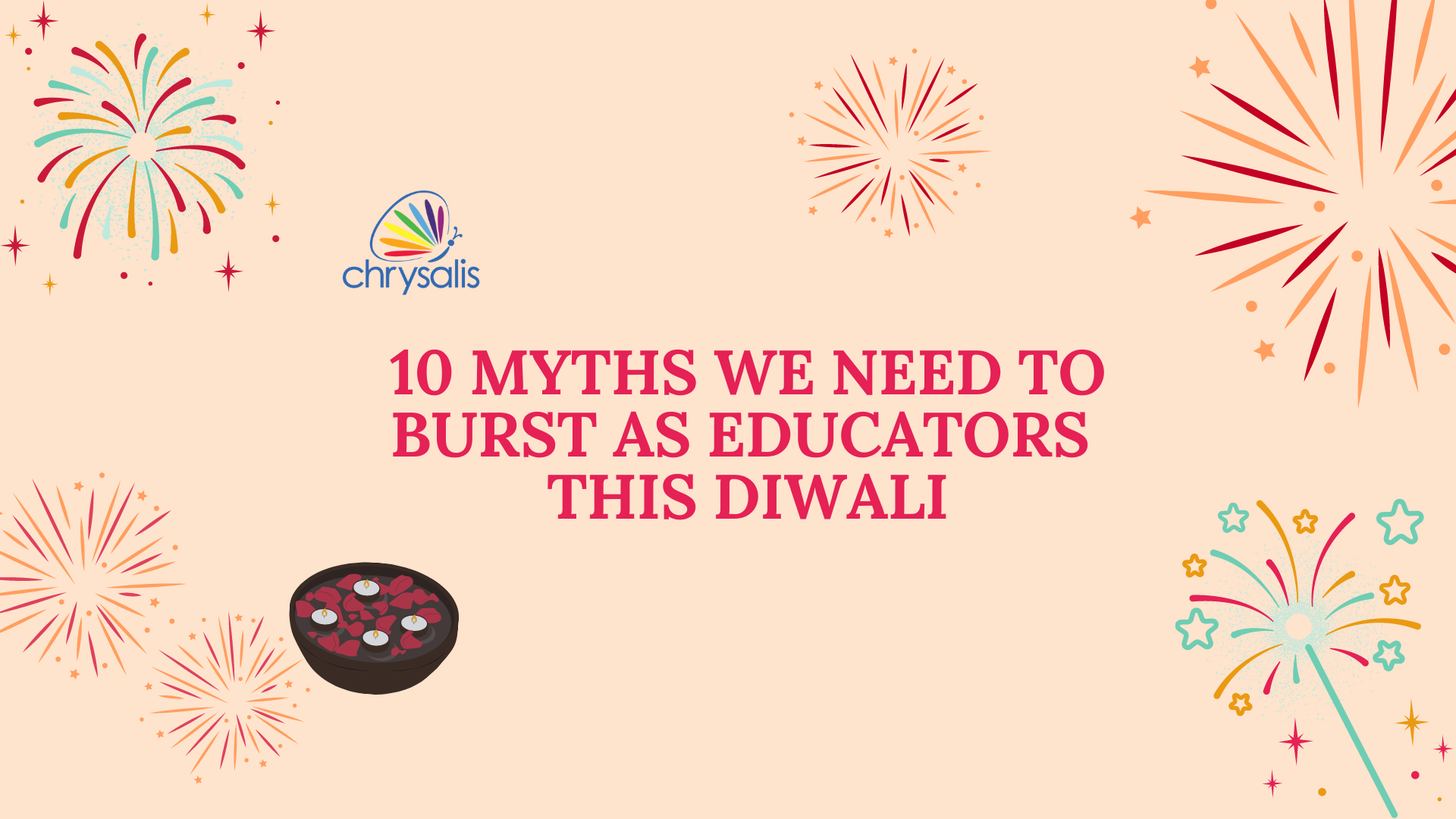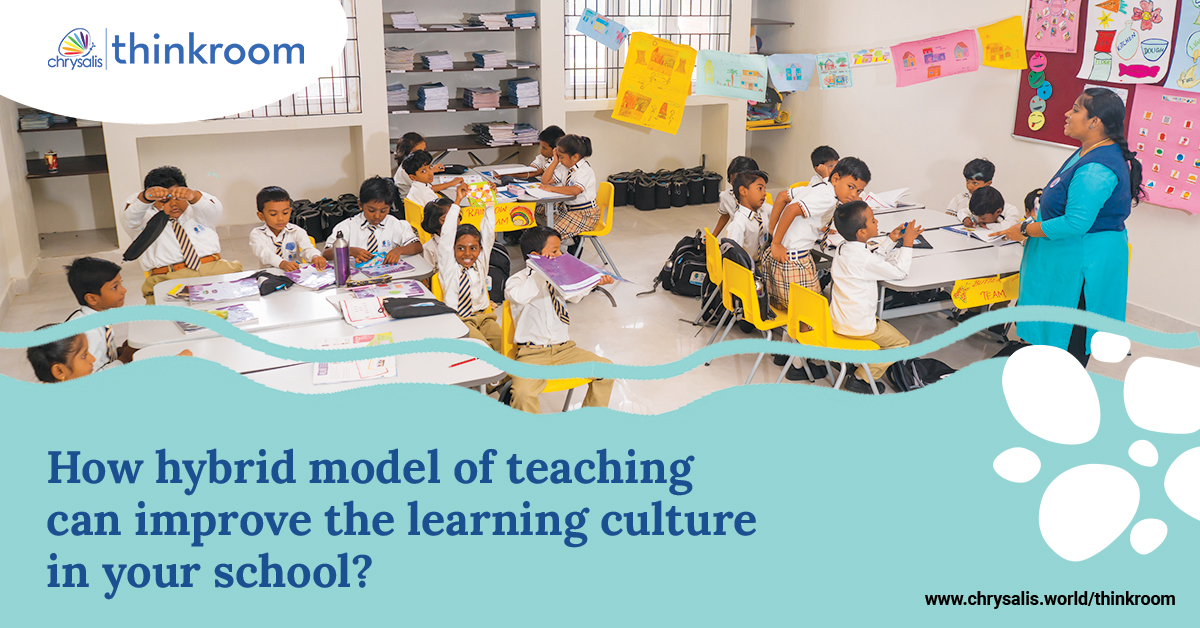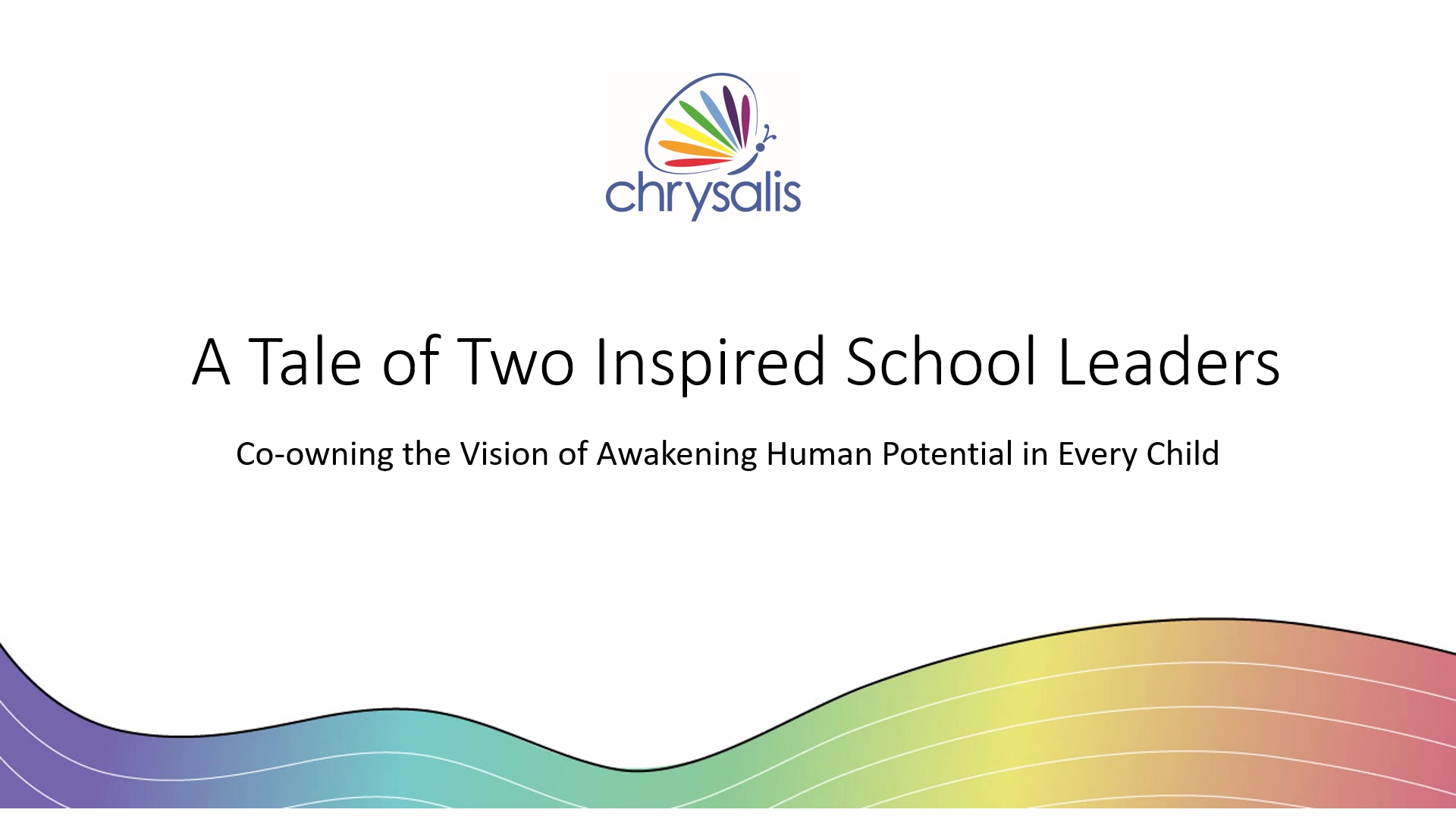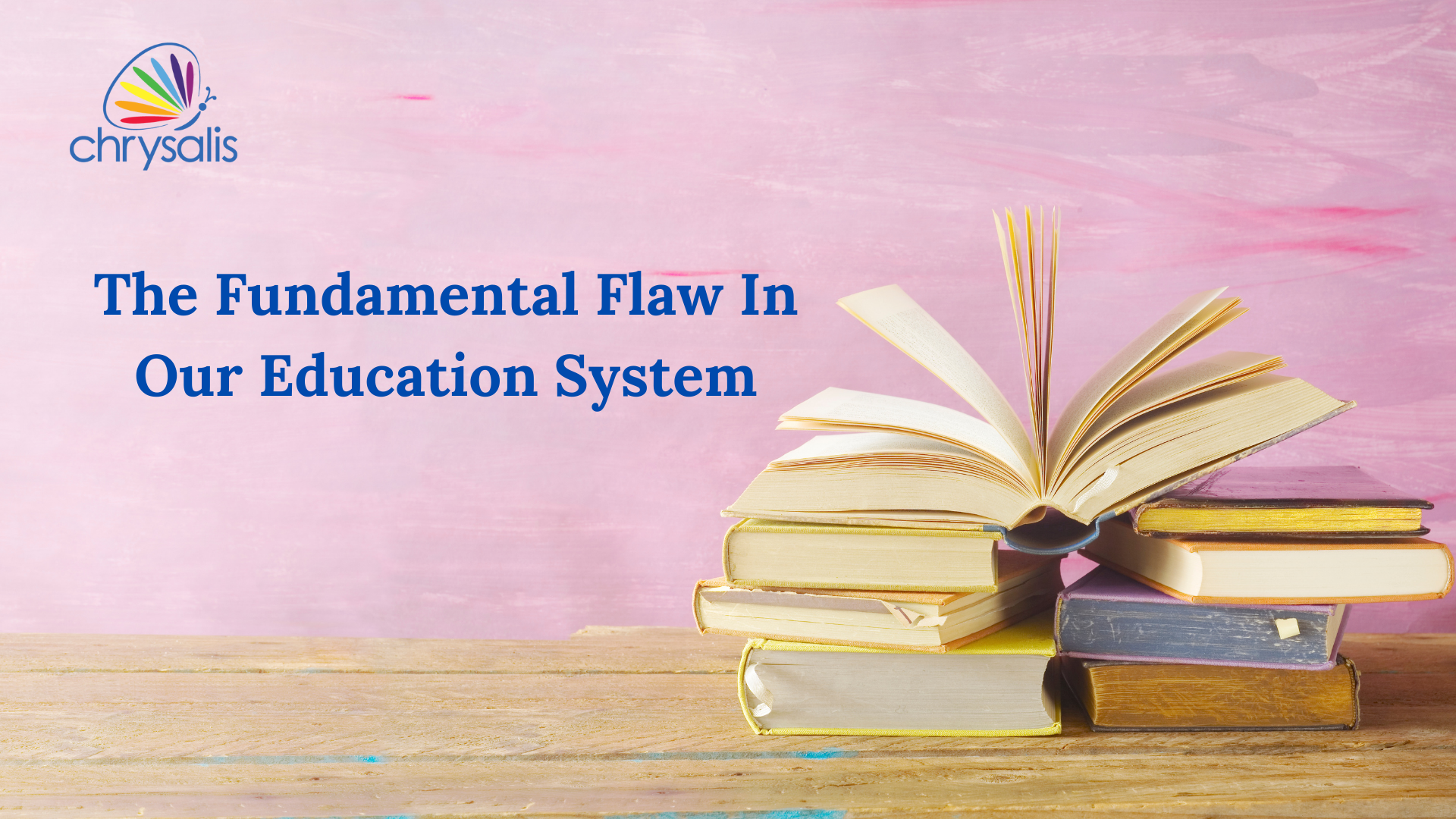It’s Diwali time! We’re busy eating sweets, lighting lamps, and most loudly, bursting crackers. While we’re at it, let’s bust some myths that are deep-rooted within our learning community and shed some light on ways to overcome them.
Myth 1: "A quiet classroom is a good classroom"
A Principal walks down the corridor, observes the classes one by one. Pointing towards a silent classroom, he or she proudly quips "This teacher has a very good control over the class." But are the kids actually learning? Do silent classrooms actually indicate good 'learning'? Learning is much more engaging and effective when there is noise born out of discussions, debates, questions, disagreements, and discoveries. So next time we come across a silent classroom, let us investigate if learning is really happening.
Myth 2: "More content in textbook means more learning"
It doesn’t matter how thick the textbook is. What matters is the content. Having 10 pages about the lesson and 5 pages of lower-order questions about the topic is not quality content. Even if there are fewer pages, kids should be attracted to the topic. And it should spark their curiosity to learn more about the topic. The more the content, the more the teachers try to rush through the topic trying to cover the syllabus. Let us not try to 'cover the syllabus'. Let us try to 'uncover learning.'
In fact, Finnish educators believe that "Less is More".
Myth 3: "Students cannot learn without teachers"
Teachers do play an important role in a kid’s schooling. But, many times we, as teachers, believe that we have to 'TEACH' our students. Take a step back and allow students to teach and co-teach. Because when they teach, they learn deeper and with more understanding.
Myth 4: "Kids need to be ’TOLD’ how to behave"
Kids are individuals who like to laugh, play and be active, in general. But, if we’re constantly 'telling' them what to do or what not to do, it hinders their thinking. We don’t have to disciple them by 'telling'. Rather take a reflection-based approach. So, instead of minding them or telling them what to do, let’s talk to them in a way they understand, ask them questions, and help them understand the implications of their actions. Trust your kids and believe that they can act according to the situation.
Myth 5: "Kids can’t be our equals"
Try this technique out once. Treat kids as if they’re adults. It might sound unsettling at first, but it actually works. Kids have the same feelings and emotions as adults. So why treat them in a way that’s any less? Let’s level with them instead of leveling down to talk to them. Don't let the notion that they are naive or innocent get in the way. Kids are smarter than we give them credit for.
Myth 6: "Children can't make good decisions"
We often think that kids should not be included in decision-making processes because they’re not mature enough. Shouldn’t they be a part of it if we’re discussing things that affect them? Let’s start with simple things like setting deadlines for their homework, forming a classroom routine, and assigning chores for them. This gives them a sense of responsibility and they’ll feel the need to do their tasks properly. The more we involve them in the decision-making process, the better decision-makers they are bound to become.
Myth 7: "Poor grades equal to poor efforts of students"
Some students just don’t do well in tests and exams. The reasons might be many. But it doesn’t mean that they put in less effort than a higher-scoring student. It’s also important to question the way we assess the kids and think if it's effective. Grades don’t give an absolute measure of a child’s education. If at all anything, poor grades only reflect upon the quality of the teaching-learning process itself.
Myth 8: "Teachers have to mold and shape kids’ minds"
Each kid is unique and they are their own selves. Expecting all of them to think and act in a way that their teachers want leads to a herd mentality. This also affects the way they act and behave in classrooms. Furthermore, it limits their right to express their thoughts and feelings. Let’s stop expecting teachers to be potters fashioning something good out of the children’s minds and see them as gardeners who understand that every plant is different and takes care of them appropriately. After accepting that the ‘one size fits all’ concept doesn’t work here, we can see kids blooming into pretty flowers which puts a smile on our faces. Let us not be the 'potter' who molds the minds, let us be the 'Gardner of Dreams'.
Myth 9: "Level up teachers’ grades to level up their career"
Schools need robust HR practices and a well-structured career path for teachers. Unfortunately, many school leaders and teachers still believe that moving up the grade is an indicator of career growth. Instead of thinking that promoting teachers to higher grades is a way of career growth, we must introduce functional growth approaches to make teachers experts in the level of grade that they are most comfortable teaching in.
Myth 10: "Computer science, sports, and arts & crafts are secondary"
Sports and academics go hand in hand. Actually, sports help kids to study better by calming their minds and improving their concentration to develop better reading and remembering skills. In a current tech-led scenario, having basic computer skills has become a life skill. Also, because of the pandemic, even normal day-to-day activities like buying groceries and paying bills are done online. We also have the responsibility of teaching kids to use computers in a safe way without affecting their health. Many kids understand and are more interested to learn about abstract math and science concepts when there’s an activity involved. We can teach about DNA and use a 3D model of it as a teaching aid. But, if we ask the kids to build a DNA replica using multicolored straws, not only will they understand how it’s built but also, they’re less likely to forget which bases are paired together. The National Education Policy states that “The curriculum must include basic arts, crafts, humanities, games, sports and fitness, languages, literature, culture, and values, in addition to science and mathematics, to develop all aspects and capabilities of learners”. So, let’s act on it.
Apart from these myths, there are many others like good handwriting means good writing skills, and the most overlooked one, kids should try to make fewer mistakes. But how will they learn if they don’t make mistakes? I think this applies to kids as well as adults. The hard truth is that we cannot be perfect and we can’t expect our kids to be perfect either. We can learn from our mistakes and try not to repeat them. We're doing our best and we need to stop being hard on ourselves and acknowledge the positive impact we've made. If we encourage our kids to do the same and practice this ourselves, we’ll surely see lights and fireworks sparking up our nights in the near future. Wish you all a safe and happy Diwali!
Disclaimer: The views, thoughts, and opinions expressed in the text belong solely to the author, and not necessarily to the author's employer, organization, committee, or other group or individual.





